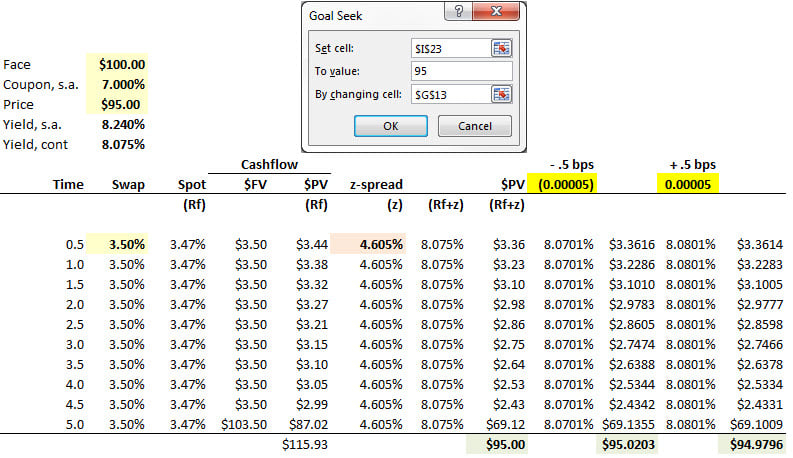Bernard57950
New Member
Hello,
May someone help me with the 6.3 example regarding the computation of the spread 01 (p.155).
In fact, I don't understand the way it is calculated.
0.07/2 * e-(0.0347+0.04605-0.00005)i1/2 + e-(0.0347+0.04605-0.00005)*5
Where i = 2 to 5?
I don't manage to find the results could someone detail the way of doing it?
Thank you very much for your help
Best regards
Bernard
May someone help me with the 6.3 example regarding the computation of the spread 01 (p.155).
In fact, I don't understand the way it is calculated.
0.07/2 * e-(0.0347+0.04605-0.00005)i1/2 + e-(0.0347+0.04605-0.00005)*5
Where i = 2 to 5?
I don't manage to find the results could someone detail the way of doing it?
Thank you very much for your help
Best regards
Bernard

